Abstract
The temperature of chilled foods is an important variable for controlling microbial growth in a production and distribution chain. Therefore, it is essential to model growth as a function of temperature in order to predict the number of organisms as a function of temperature and time. This article deals with the correct variance-stabilizing transformation of the growth parameters A (asymptotic level), μ (specific growth rate), and λ (lag time). This is of importance for the regression analysis of the data. A previously gathered data set and model for the effect of temperature on the growth of Lactobacillus plantarum (M. H. Zwietering, J. T. de Koos, B. E. Hasenack, J. C. de Wit, and K. van 't Riet, Appl. Environ. Microbiol. 57:1094-1101, 1991) is extended with new data. With the total data set (original and new data), a variance-stabilizing transformation is selected in order to determine which transformation should precede fitting. No transformation for the asymptote data, a square root for the growth rate, and a logarithmic transformation for the lag time were found to be appropriate. After these transformations, no significant correlation was found between the variance and the magnitude of the variable. Model corrections were made and model parameters were estimated by using the original data. With the new data, the models were validated by comparing the lack of fit of the models with the measurement error, using an F test. The predictions of the models for μ and λ were adequate. The model for A showed a systematic deviation, and therefore a new model for A is proposed.
Full text
PDF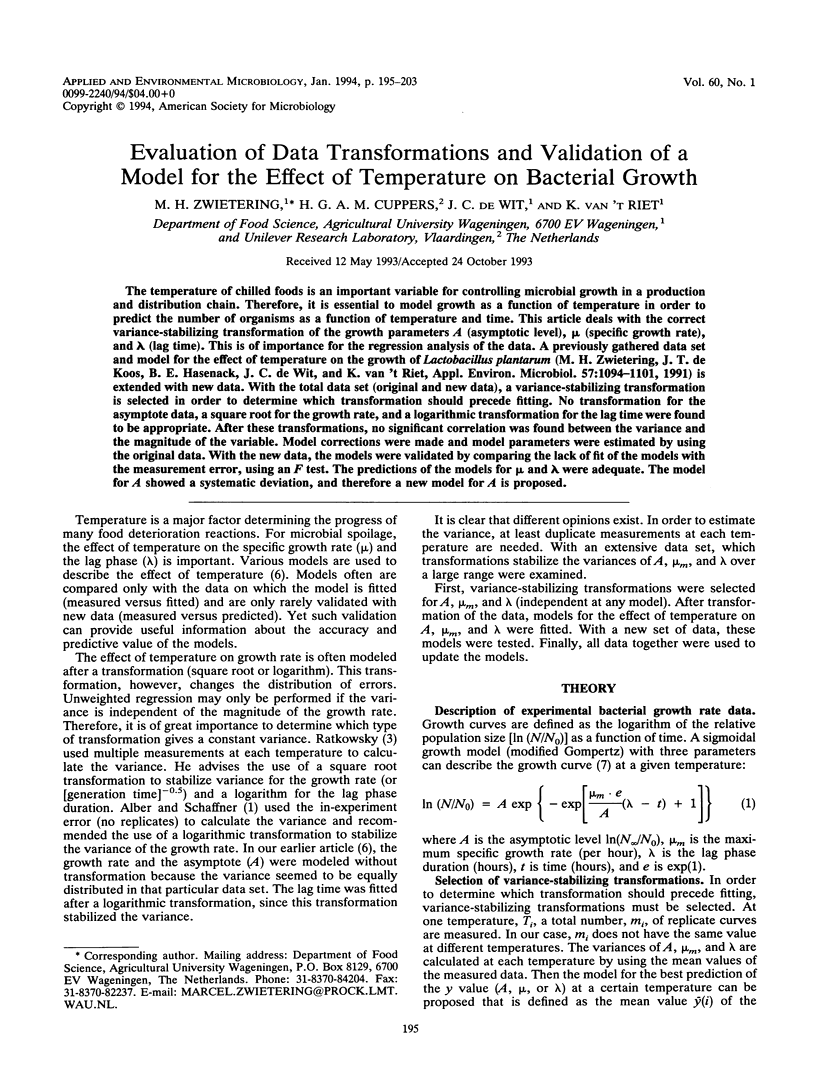

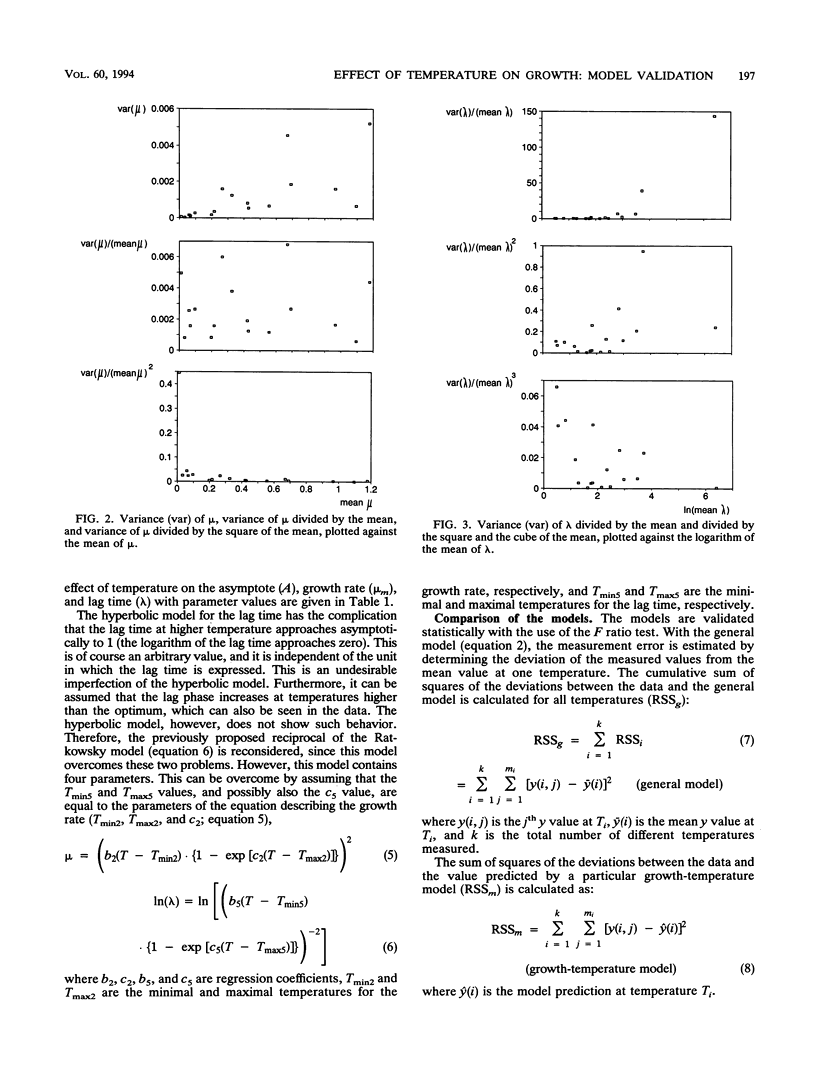
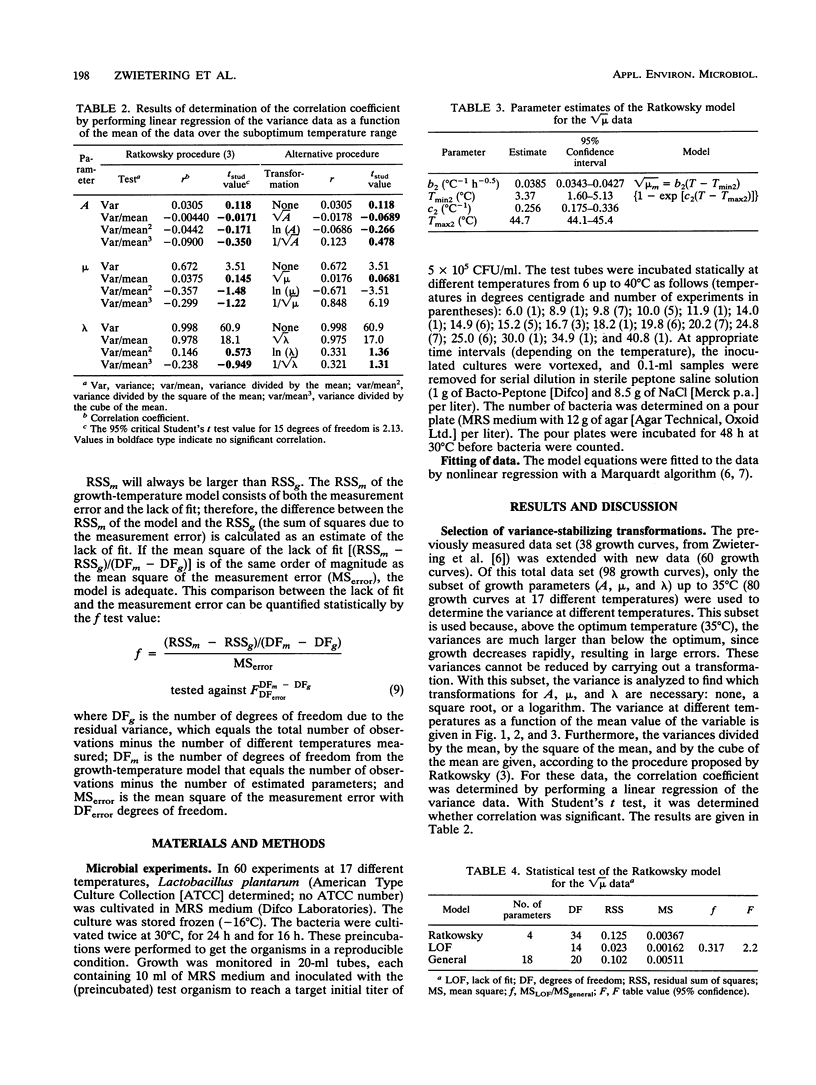
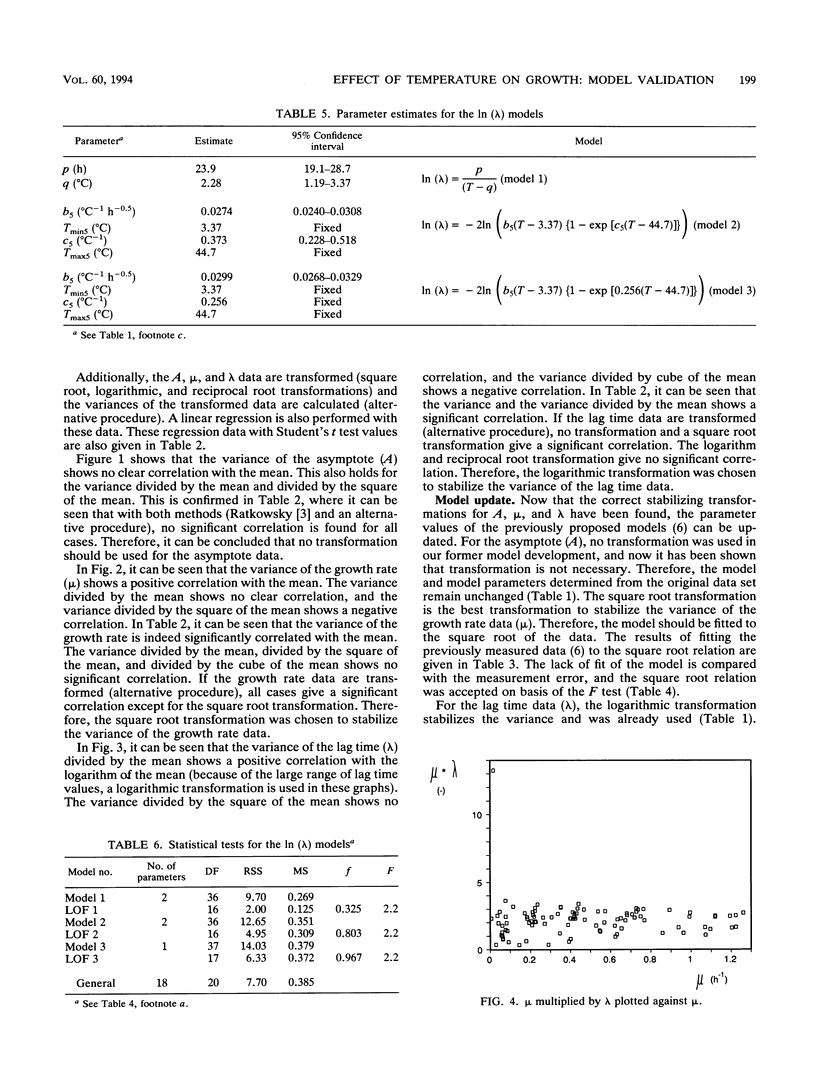
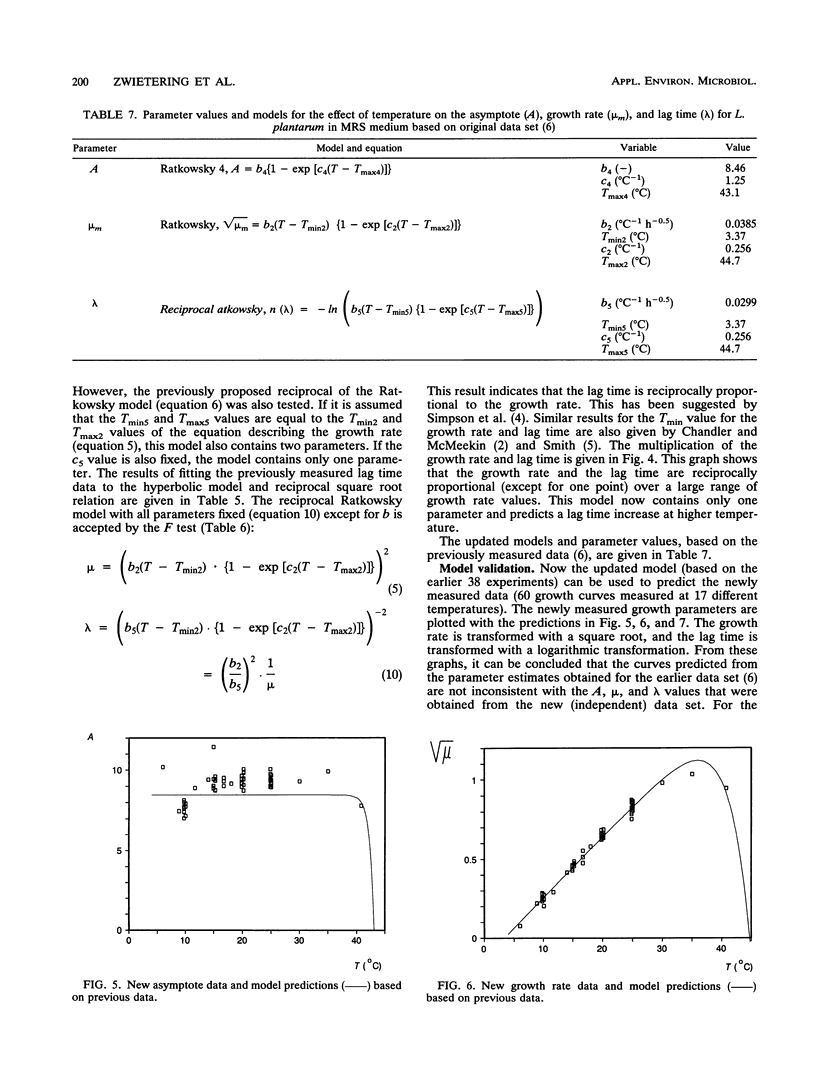
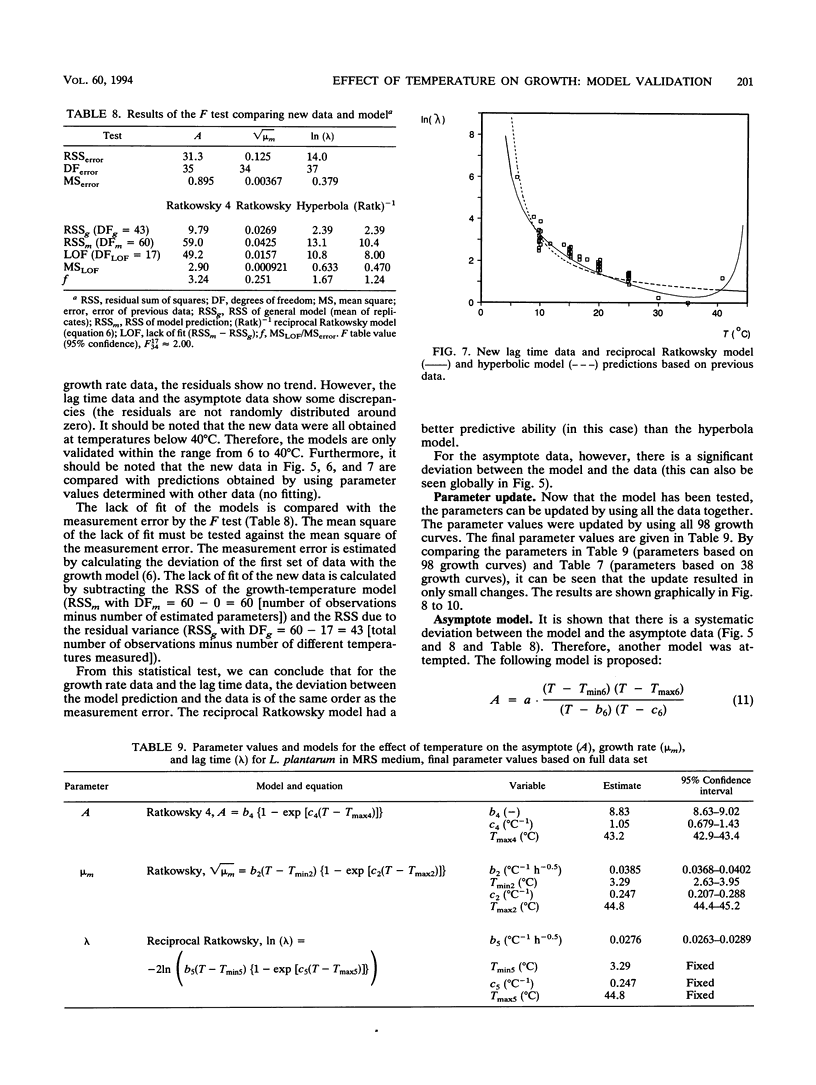
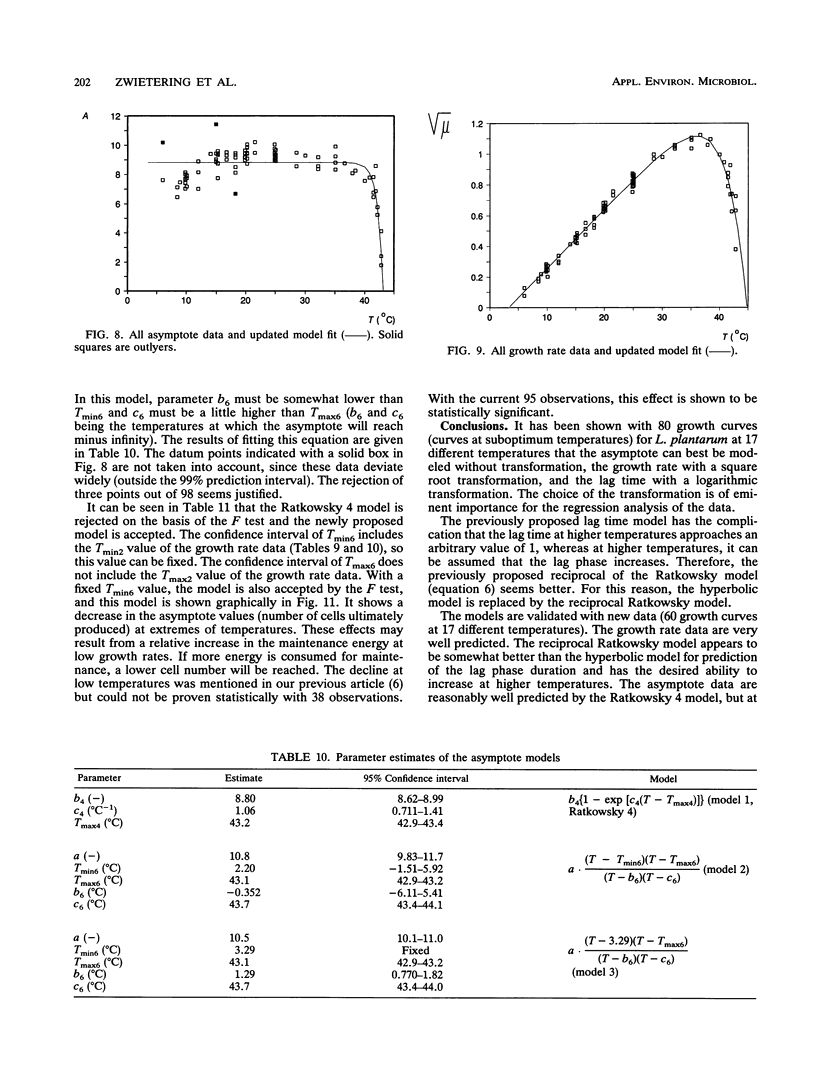
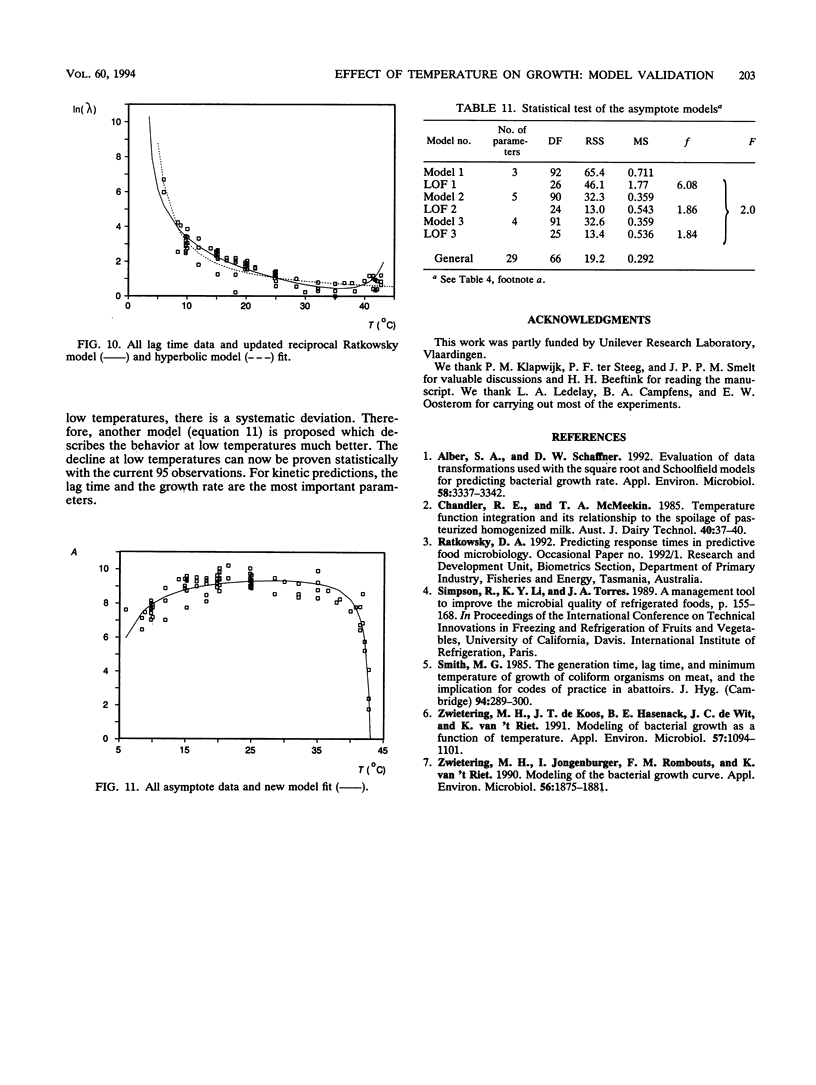
Selected References
These references are in PubMed. This may not be the complete list of references from this article.
- Alber S. A., Schaffner D. W. Evaluation of data transformations used with the square root and schoolfield models for predicting bacterial growth rate. Appl Environ Microbiol. 1992 Oct;58(10):3337–3342. doi: 10.1128/aem.58.10.3337-3342.1992. [DOI] [PMC free article] [PubMed] [Google Scholar]
- Smith M. G. The generation time, lag time, and minimum temperature of growth of coliform organisms on meat, and the implications for codes of practice in abattoirs. J Hyg (Lond) 1985 Jun;94(3):289–300. doi: 10.1017/s0022172400061519. [DOI] [PMC free article] [PubMed] [Google Scholar]
- Zwietering M. H., Jongenburger I., Rombouts F. M., van 't Riet K. Modeling of the bacterial growth curve. Appl Environ Microbiol. 1990 Jun;56(6):1875–1881. doi: 10.1128/aem.56.6.1875-1881.1990. [DOI] [PMC free article] [PubMed] [Google Scholar]
- Zwietering M. H., de Koos J. T., Hasenack B. E., de Witt J. C., van't Riet K. Modeling of bacterial growth as a function of temperature. Appl Environ Microbiol. 1991 Apr;57(4):1094–1101. doi: 10.1128/aem.57.4.1094-1101.1991. [DOI] [PMC free article] [PubMed] [Google Scholar]
- Zwietering M. H., de Koos J. T., Hasenack B. E., de Witt J. C., van't Riet K. Modeling of bacterial growth as a function of temperature. Appl Environ Microbiol. 1991 Apr;57(4):1094–1101. doi: 10.1128/aem.57.4.1094-1101.1991. [DOI] [PMC free article] [PubMed] [Google Scholar]


